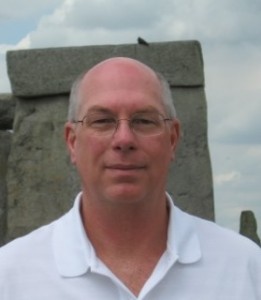Faces of ALBA: Dale Hueber
Teaching the Spanish Civil War in AP World History
Dale Hueber did not follow the usual path to teaching history. His initial degree was in music education with a goal of becoming a band director. Instead, he enlisted in the Army, became an officer and served for 22 years. After he retired as a Lieutenant Colonel, he wanted to teach but not as a band director. He pursued a Masters in Social Studies Education at the University of South Florida. “On the day I retired from the Army,” Hueber said, “my daughters’ high school principal asked if I was ready to teach and whether I could teach world history and government.” The books and materials were waiting for him at the school. That was 15 years ago; he has been teaching in East Bay High School in the Hillsborough School District (Tampa, Florida) ever since. For the last 11 years he has taught Advanced Placement World History.
You attended your first ALBA institute in 2008. What did you get out of it?
I didn’t know much about American involvement in the Spanish Civil War, or the international involvement on both the Republic and Fascist sides. It was a boiling point, especially with the breakdown of the League of Nations. It told Hitler he could do what he wanted.
How many institutes have you attended?
I have attended three institutes. I also developed a lesson plan around Paul Robeson that was well received by teachers and has also worked well with students. The new Florida state social studies standards require a listening component to the primary sources and so I use a song from Robeson when I get to the Spanish Civil War.
How do you integrate the Spanish Civil War into your curriculum?
I do a single day on it, which is a lot of time in the AP World History curriculum. I developed a Documents Based Question (DBQ) at the teaching institute that I use in class. Students are doing DBQs at a very high level by the time we get to the Spanish Civil War. They have no trouble identifying the point of view in any primary source, which is a key part of the DBQ section on the AP exam. But the way I approach the topic changes from year to year. Sometimes I use the Paul Robeson comic from the ALBA curriculum resources (http://www.alba-valb.org/resources/document-library/volunteer-june-2009). I always bring in Picasso’s Guernica because students are sophomores and they are already familiar with the painting from their art curriculum. I also show video clips from the institute. The AP World History curriculum focuses on getting students to recognize when focal points happen and how their impact diffuses in history. Students get the Spanish Civil War. They can connect it with contemporary events, such as Syria, where the U.S. dropped that ended up in the enemy’s hands, and both sides are supplied with weapons from outside sources. Look at ISIS, smartly recruiting Muslims from around the world. History lessons never get old.
Do students latch onto the Spanish Civil War?
I show the video The Century: America’s Time, narrated by Peter Jennings. The section on World War II opens with Guernica, so it reinforces the significance of the Spanish Civil War. Together, the primary sources and Paul Robeson, Guernica, and the video lock it in for the students. It is one of the few single events with a narrow scope and duration that I drill down into throughout the whole year. I believe that the training with ALBA and the University of South Florida is important and needs to continue. It not only provides teachers and students with information about a pivotal moment in the 20th century, but does so with a wealth of different resources and methodologies.
ALBA board member Aaron B. Retish teaches Russian History at Wayne State University.














